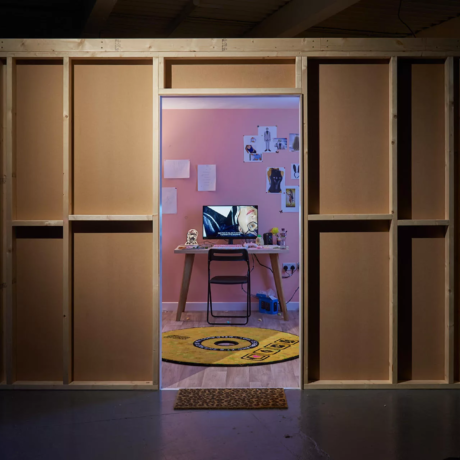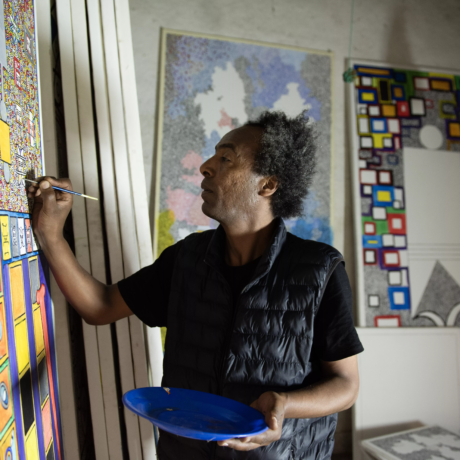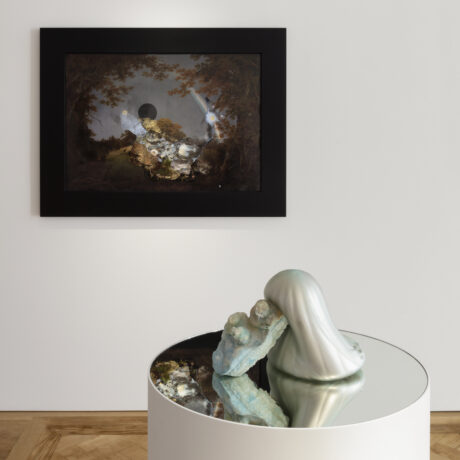Confessions is a monthly column by Emily Pope. This month, she talks to artist Al Freeman about Freeman’s new body of work and about being ambidextrous.
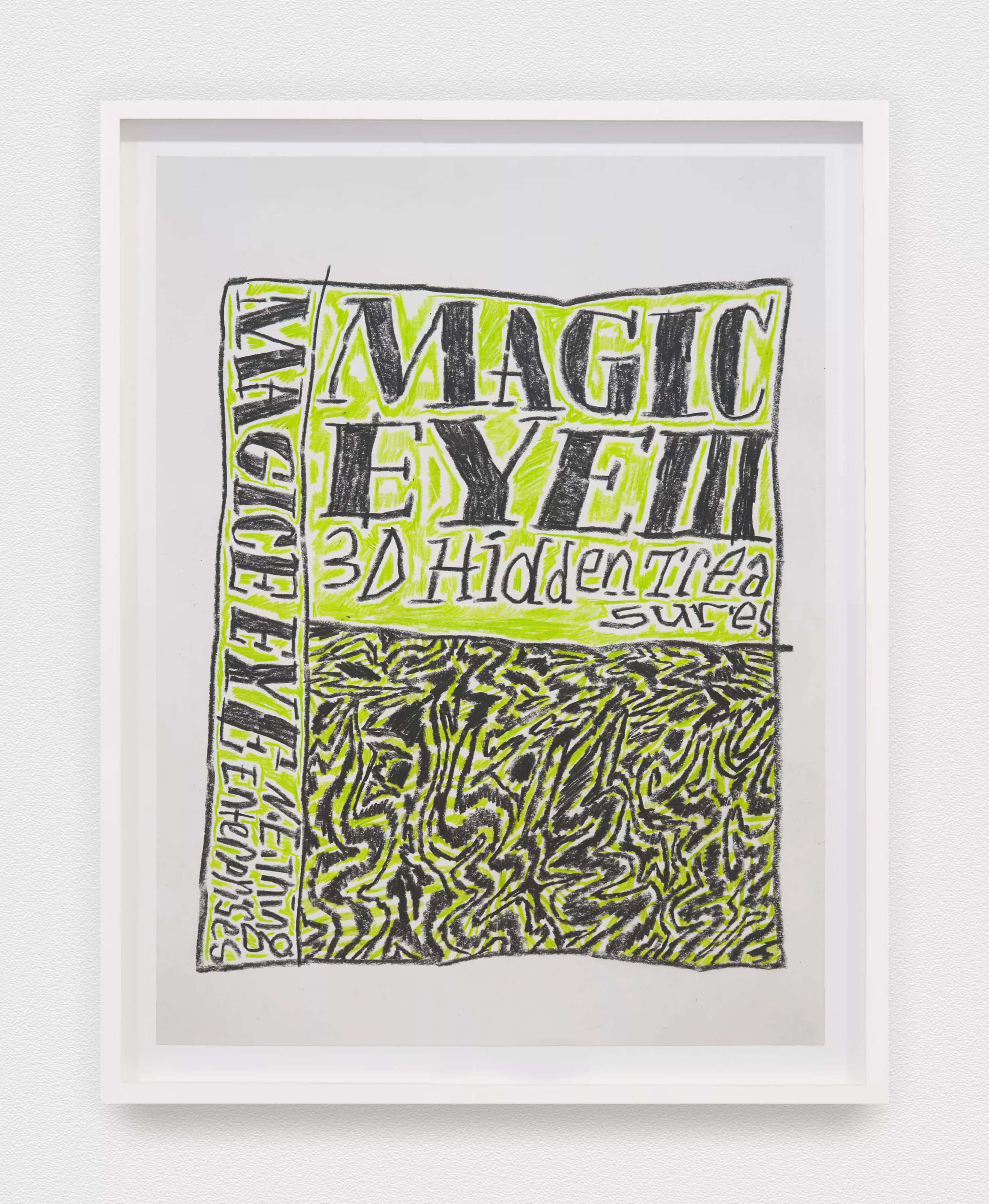
Recently, I was in New York trying to get my head together. And in the process, I survived an earthquake. I was dog-sitting in my friend’s house in Red Hook, Brooklyn, where all the buildings are inexplicably tall and spindly, and all of a sudden the dog started barking in a more eccentric manner than usual and everything began to shake. The contemporary art looked like it was about to roll down the walls and I was convinced I was going to die, impaled by a Jesse Darling sculpture. What a way to go. I felt, somehow, that everything which followed on my trip was uncannily, coincidentally ‘supposed to’ happen.
I’ve been thinking, writing, and making films for some time on the subject of covers (karaoke specifically) and more broadly, being a fan. I am also interested in the facets of the diary and memoir—which I like to think of as a cover version of the true self—so, one could say that Al Freeman’s work and exhibition Covers: Drawings 2023-2024, featuring heavily stylised drawings of an eclectic yet idiosyncratically connected collection of book and record covers, alongside oversized blow up sculptures of coloured pencils and an extension cable, fits my interests.
Freeman lives and works in Brooklyn, she is well versed in satire, the everyday, and has investigated representation and appropriation through sculpture and juxtaposition (a favourite series of mine was Comparisons, in which she placed images of iconic artworks alongside cult images from the internet) for the duration of her career. I reached out to see if I could talk to Al and was delighted she said yes.

EP: So shall we –
AF: Begin at the beginning?
EP: Yeah. Do you want to tell me a story?
AF: Yeah, I’ll tell you a story. So when I was in graduate school, I was getting sick of my hand and the marks that I was making. During this really, really boring lecture, instead of taking notes with my right hand, I started to try to take notes with my left hand. It started with a lecture that I lost interest in, and I ended up finding a new interest. I started to try to draw upside down, or to write upside down, to do mirror writing, to write backwards, all with my left hand. That really shifted how I was able to draw. I was interested in trying to de-skill my practice, de-skill the way my work looked. I started to paint with my left hand and started to only write with my left hand, right! And I’ve done that ever since. It’s been 15 years that I’ve only been writing with my left hand and drawing also with my left. I actually draw with both hands now because I was able to mimic my left handed writing with my right hand.
EP So you’re, really, extra ambidextrous!
AF: Whenever I feel stuck or like something is not working, it’s easy for me to go back and forth between the hand, the hands and have something more—I don’t know—it feels like leaving things more to chance. I still don’t have as good dexterity with the left hand, but yeah, it helps to switch things up and it totally transformed the way my work looked. I think it also does something in your brain, but I think I’ll leave that to the scientists.
EP: There is a leveling of different kinds of culture through your work. It’s not really about, it seems anyway, placing one thing above the other, but bringing all aspects involved in making your work to a level playing field; mediums, types of inspiration—‘high’ and ‘low’ class considered as equal—was there something of this desire for equality in the impetus to become ambidextrous?
AF: More just an impulse! That’s actually an interesting thing to point out, because I do feel attracted to the ‘low.’ I guess because some of my favorite artists are just kind of like in the more de-skilled camp, Cy Twombly is a hero of mine. That’s probably obvious. I prefer that kind of work and that kind of art—my body responds to it more positively. I also don’t really like this ‘worship’ of skill. There’s something a bit basic about it, to privilege high realism or the things that people see as skilled. I don’t think that that’s better than whatever this is, I think this is as much of a skill. It would be nice if those things could be leveled a bit more.

EP: This is your first major presentation of drawing. How did you choose the record covers and the book covers? Are these covers that you have in your home, things that really mean a lot to you?
AF: I made, like, a lot of drawings. We chose from about 40 drawings that I did. And there was a huge range of drawings there. Some very iconic works, some totally, like, just works I thought had cool covers that would be less recognizable to other people. Some of them are books that I have in my home and I’ve lived with for a long time. It is also an introduction into the things that influenced me, right. I think there’s a lot of reasons that I draw, but one of them is just to learn stuff and the other one is to create a reveal for the personal things that inform my work.
EP: I love the Roald Dahl cover. When I was younger I really loved the Twits. That was my favorite Roald Dahl book, because of this specific illustration where Quentin Blake has drawn what you look like if you’re a ‘happy, ugly person’ and what you look like if you’re a ‘mean, person,’ and how the kind, happy, not conventionally attractive person always will look warmer and more desirable. And I’ve never forgotten that image. What’s your favourite cover drawing you’ve done?
AF: My favourite one in the show is the Magic Eye. The Magic Eye was this phenomenon from the nineties—it was this psychedelic, complex image, an optical illusion and if you stared at it in a certain way there were certain shapes that would become three dimensional. In the nineties there were posters of it everywhere, it was a whole thing. But what was so fun and interesting to me about trying to draw the Magic Eye is that it’s an image that’s essentially impossible to draw, right? It was the most unpredictable to make, and the hardest, how to draw an image that can’t really be drawn? So that one was a learning experience. I should mention that a lot of the drawings took a lot of tries. For every one that worked, there were three to five drafts that didn’t!
EP: I wanted to talk to you generally about humour within artworks, artworks as punchlines, how do you feel about the types of humour you use in the work?
AF: I definitely feel like my work is funny, I think it’s just part of how I entertain myself in life and that ends up kind of seeping into the work. I don’t really know how to talk about humour, it seems like a weird thing to talk about. It’s kind of like if you get it, great. If you don’t. Sorry.
EP: Haha, fair enough. Was there a story between the different covers, when you placed them next to each other, were they in conversation with one another?
AF: Yeah, of course. The Gray’s Anatomy being next to Warhol is a reference to Basquiat as he drew from Gray’s Anatomy a lot, and he collaborated with Andy Warhol, right? I mean, so there’s those kinds of relationships. There are inherent links between things I am attracted to.
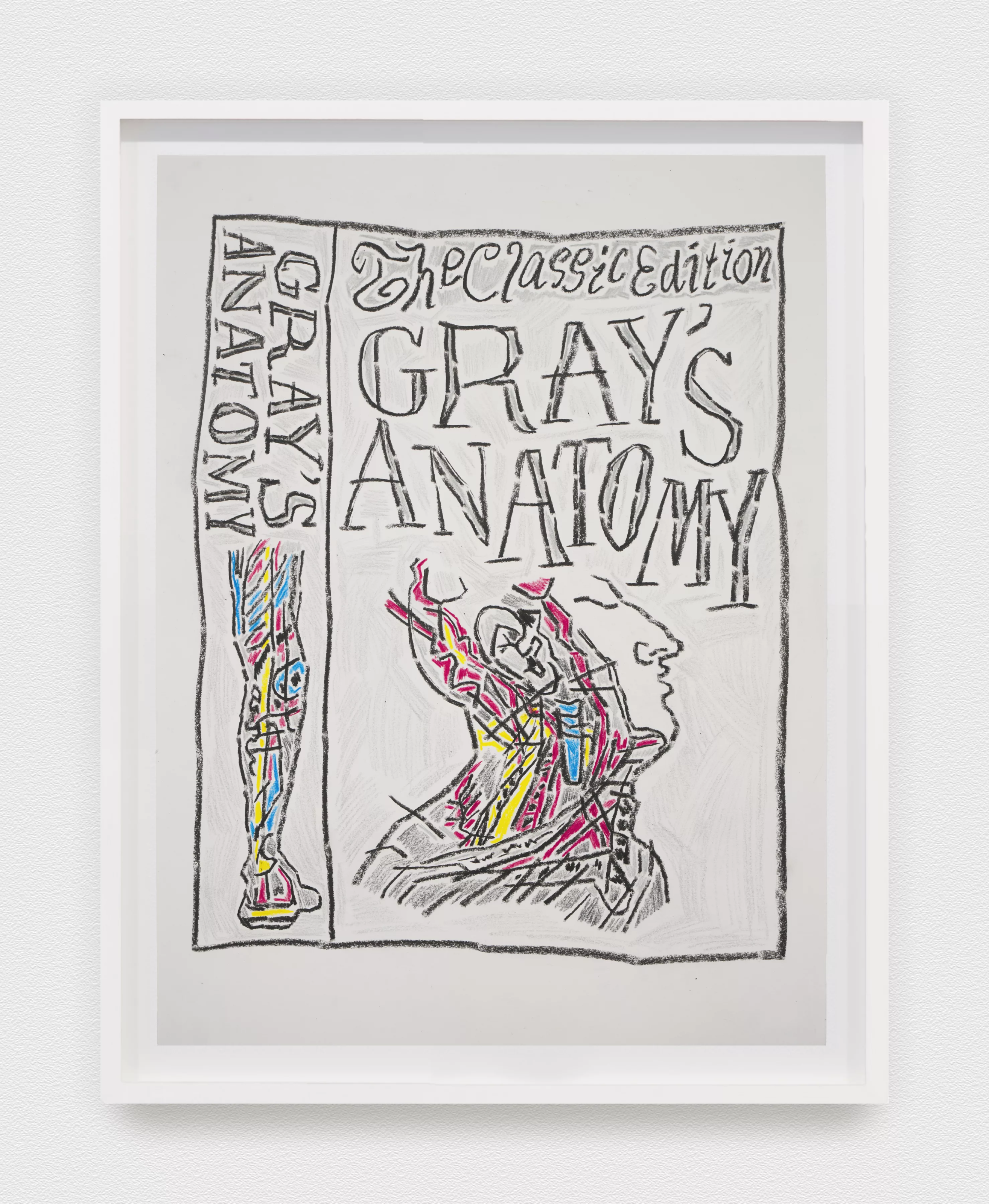
EP: I think it’s great to make a show so heavily representative of a series of personal references—everybody in the art world is so obsessed with keeping their cards very close to their chest, sharing in cryptic ways what their references are, even though most people do in this kind of hyper-curated photo dump, ten screenshot kind of way on Instagram and that feels like showing off, so I think it’s interesting to do this in a more straightforward way, directly, in exhibition form. It’s celebratory!
AF: While I was thinking about the questions that you wrote, what came to mind is this thing (I mean, I’m paraphrasing) Damien Hirst said that, people just make work about the things and objects that they’re surrounded by. Essentially, these works are a sincere review of the things that I like and the things that influence me and yeah, it’s one to one, it’s quite intimate.
Covers Drawings: 2023-2024 is a show exhibited over two spaces, 56 Henry and Venus Over Manhattan, New York, open between April 6th and May 6th 2024.
Words by Emily Pope


